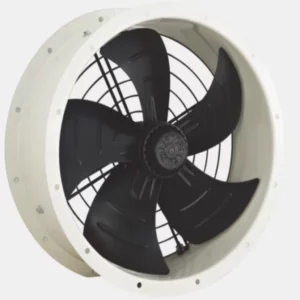Posts By Eli Stewart
What is green house polythene sheet?
A greenhouse polyethylene sheet, also known as greenhouse film or poly film, refers to a type of plastic sheeting made from polyethylene material that is commonly used for covering or glazing greenhouses. It is a lightweight, flexible, and cost-effective option for greenhouse construction.
Here are some key features and characteristics of greenhouse polyethylene sheets:
- Material: Greenhouse polyethylene sheets are made from polyethylene, a type of thermoplastic polymer. Polyethylene is chosen for its durability, flexibility, and ability to transmit light.
- Light Transmission: Polyethylene films are designed to allow a significant amount of sunlight to pass through. The level of light transmission can vary depending on the specific type of polyethylene film and its additives. Greenhouse poly films are available in different grades, ranging from clear to translucent or diffused, which affects the amount and quality of light entering the greenhouse.
- UV Stabilization: To protect plants from harmful ultraviolet (UV) radiation, greenhouse polyethylene films are often treated with UV stabilizers. These additives help to extend the lifespan of the film by reducing degradation caused by UV exposure.
- Thickness: Greenhouse polyethylene sheets come in various thicknesses, typically measured in mils (thousandths of an inch) or microns. Thicker films offer increased durability and insulation properties. The appropriate thickness is determined by factors such as the greenhouse size, climate conditions, and the desired level of insulation.
- Durability: While not as durable as rigid materials like glass or polycarbonate, greenhouse polyethylene films are designed to withstand the rigors of outdoor use. They are resistant to tearing, puncturing, and degradation from weather elements when properly installed and maintained. However, they have a limited lifespan compared to more rigid materials.
- Heat Retention and Insulation: Greenhouse poly films provide some level of insulation, helping to retain heat inside the greenhouse during cooler periods. The insulation properties of polyethylene films can be enhanced by using double layers or adding an additional layer of inflation to create an insulating air pocket.
- Customization: Greenhouse polyethylene sheets can be easily cut and shaped to fit the dimensions of the greenhouse structure. They can be secured to the framework using various attachment methods, such as clips, channels, or tapes.
- Cost-Effectiveness: Greenhouse polyethylene films are generally more affordable compared to rigid glazing materials like glass or polycarbonate. They offer a cost-effective option for greenhouse coverings, particularly for smaller or temporary structures.
- Lifespan: The lifespan of a greenhouse polyethylene sheet can vary depending on factors such as UV exposure, climate conditions, and maintenance. On average, polyethylene films may last from one to five years, although higher-quality films with UV stabilizers can last longer.
Green house polyethylene sheets are popular among hobbyist gardeners, small-scale growers, and those looking for a cost-effective solution for greenhouse construction. They provide adequate light transmission, some insulation properties, and protection from UV radiation. However, it’s important to consider the specific requirements of the greenhouse and the desired lifespan when selecting polyethylene films, as they may require replacement more frequently compared to more rigid glazing materials.
Can you provide some tips on how to properly install and maintain greenhouse polyethylene sheets?
Here are some tips for the proper installation and maintenance of greenhouse polyethylene sheets:
Installation:
- Prepare the greenhouse frame: Ensure that the greenhouse frame is structurally sound and free from any sharp edges or protrusions that could potentially damage the polyethylene sheet.
- Measure and cut the polyethylene sheet: Measure the dimensions of each greenhouse wall and roof section, allowing for some overlap. Use a sharp knife or scissors to cut the polyethylene sheet to the appropriate size.
- Secure the sheet to the frame: Start by attaching the sheet to one end of the greenhouse frame, using appropriate attachment methods such as clips, channels, or tapes designed for polyethylene films. Gradually work your way along the frame, pulling the sheet taut and securing it at regular intervals. Avoid overstretching, as it can lead to premature tearing.
- Create proper ventilation: Install appropriate vents, windows, or fans to ensure proper airflow within the greenhouse. Adequate ventilation helps regulate temperature, humidity, and airflow, reducing the risk of condensation and disease development.
- Create an inflation layer (optional): To enhance insulation and reduce heat loss, you can create an inflation layer by installing a second layer of polyethylene film. This layer is inflated with a blower or fan, creating an insulating air pocket between the two layers.
Maintenance:
- Regular inspection: Periodically inspect the polyethylene sheet for any signs of damage, such as tears, punctures, or degradation. Address any issues promptly to prevent further damage.
- Clean the sheet: Clean the polyethylene sheet periodically to remove dust, dirt, and debris that can reduce light transmission. Use a mild soap solution or a specialized greenhouse cleaner, and rinse thoroughly with water.
- Remove snow buildup: In areas with heavy snowfall, regularly remove accumulated snow from the greenhouse roof to prevent excessive weight and potential damage to the polyethylene sheet.
- Repair small damages: Small tears or punctures can be repaired using specialized greenhouse repair tapes or patches. Follow the manufacturer’s instructions for proper application.
- Maintain UV protection: Over time, the UV stabilizers in the polyethylene film may degrade, reducing its resistance to UV radiation. If the sheet becomes discolored or brittle, it may be time to replace it. UV-protective sprays can also be used to enhance the film’s UV resistance.
- Replace as needed: Greenhouse polyethylene sheets have a limited lifespan, typically lasting from one to five years. Monitor the condition of the sheet regularly and replace it when signs of significant degradation or damage are present.
Remember to consult the manufacturer’s recommendations and guidelines specific to the polyethylene film you are using, as some products may have unique installation and maintenance requirements.
Proper installation and regular maintenance of greenhouse polyethylene sheets will help ensure optimal performance, durability, and longevity of the covering, creating an ideal growing environment for your plants.
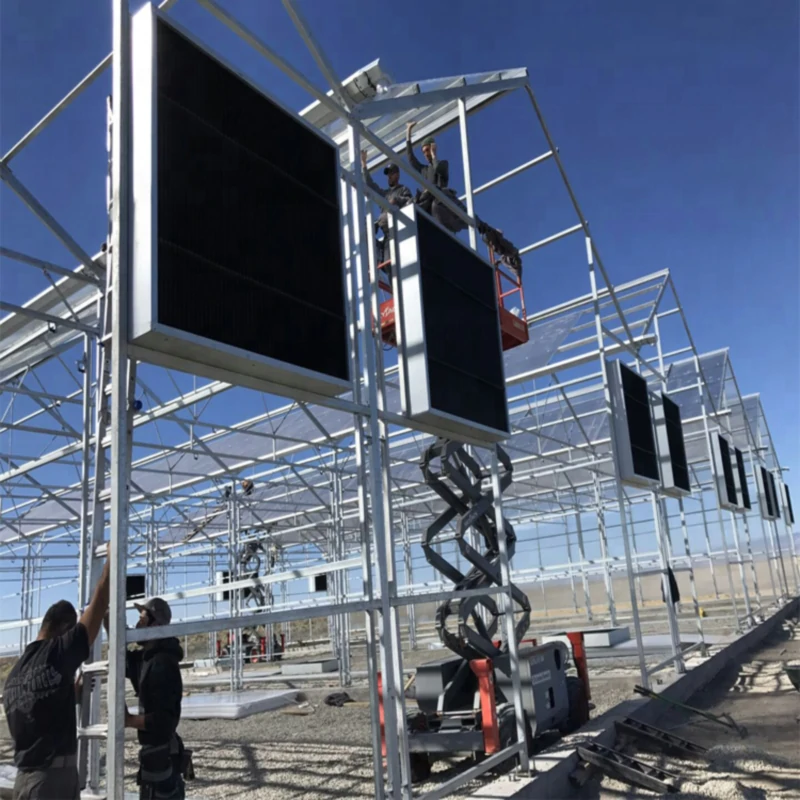
What is belt driven centrifugal fan and what are the benefits of belt driven centrifugal fan?
A belt-driven centrifugal fan is a type of centrifugal fan that operates using a belt and pulley system to transmit power from the motor to the fan’s impeller. It is an alternative configuration to direct-drive centrifugal fans, where the impeller is directly connected to the motor shaft.
The main components of a belt-driven centrifugal fan system include:
- Motor: The electric motor provides the power to drive the fan. It is typically positioned away from the fan housing and connected to the fan by a belt.
- Belt: The belt is a flexible loop made of materials such as rubber or polyurethane. It connects the motor pulley to the fan pulley and transfers power from the motor to the fan’s impeller.
- Pulleys: Pulleys are cylindrical wheels with grooves that guide and control the movement of the belt. There are two pulleys in a belt-driven system: the motor pulley, which is connected to the motor shaft, and the fan pulley, which is connected to the fan shaft.
- Tensioning Mechanism: A tensioning mechanism is used to maintain the appropriate tension in the belt. It ensures proper power transmission and prevents slippage between the belt and pulleys.
The operation of a belt-driven centrifugal fan involves the following steps:
- Power Transmission: When the motor is turned on, it rotates the motor pulley, which, in turn, rotates the belt. The rotating belt transfers the rotational force to the fan pulley, causing it to rotate.
- Impeller Rotation: The fan pulley is connected to the fan shaft, which spins the impeller inside the fan housing. The impeller consists of blades that accelerate the air radially outward, generating airflow.
- Air Discharge: The high-velocity air is discharged from the impeller into the fan housing and directed towards the desired outlet or ventilation system.
Belt-driven centrifugal fans offer several advantages:
- Flexibility: The belt and pulley system allows for flexibility in positioning the motor and fan. This flexibility can be advantageous when space constraints or specific installation requirements need to be met.
- Speed Control: Belt-driven systems can provide speed control options by varying the size of the pulleys or using an adjustable-speed motor. This allows for adjustments in airflow and pressure to meet changing system demands.
- Reduced Noise and Vibration: The use of a belt can help isolate the fan motor from the impeller, reducing noise and vibration transmission. This can be beneficial in applications where noise reduction is a priority.
- Maintenance and Repair: Belt-driven systems offer ease of maintenance and repair. If the belt or pulleys require replacement or adjustment, it can be done without disassembling the entire fan unit.
However, it’s important to note that belt-driven centrifugal fans may have slightly lower efficiency compared to direct-drive fans due to energy losses in the belt transmission. Regular inspection, adjustment, and replacement of the belt are necessary to maintain optimal performance.
Overall, belt-driven centrifugal fans are widely used in various applications, belt driven centrifugal fan including HVAC systems, industrial ventilation, and commercial air handling units, where flexibility, speed control, and ease of maintenance are desired.
What are the benefits of belt driven centrifugal fan?
Belt-driven centrifugal fans offer several benefits that make them a preferred choice in certain applications.
Here are some of the advantages of using belt-driven centrifugal fans:
- Flexibility in System Design: Belt-driven fans provide flexibility in system design and installation. The separation between the motor and the fan allows for greater freedom in positioning and alignment. This flexibility is especially useful in applications where space constraints or specific installation requirements need to be considered.
- Adjustable Speed Control: Belt-driven fans offer the ability to adjust the fan speed by changing the pulley sizes or using an adjustable-speed motor. This allows for precise control over the airflow and pressure, enabling optimization of the system’s performance based on varying requirements. Adjustability in fan speed also contributes to energy savings, as the fan can be operated at the most efficient speed for a given situation.
- Noise and Vibration Reduction: The belt and pulley system in a belt-driven fan helps to isolate the motor from the fan impeller. This isolation reduces the transmission of noise and vibration, resulting in quieter operation. This is particularly beneficial in applications such as HVAC systems in noise-sensitive environments like offices, schools, or hospitals.
- Maintenance and Repair Convenience: Belt-driven fans offer ease of maintenance and repair. If the belt needs replacement or adjustment, it can be done without disassembling the entire fan unit. This simplifies maintenance procedures and reduces downtime, resulting in cost savings and improved system availability.
- Motor Protection: The belt-driven configuration helps protect the motor from the adverse effects of the operating environment. The separation between the motor and the fan impeller reduces the exposure of the motor to heat, dust, and other contaminants, potentially extending the motor’s lifespan.
- Retrofitting and Upgradability: Belt-driven fans can be easily retrofitted or upgraded without major modifications to the system. If there is a need to change the fan performance or upgrade to a more efficient motor, it can be accomplished by replacing the belt and pulleys or upgrading the motor, without the need for significant system changes.
- Cost-Effectiveness: Belt-driven fans can often be more cost-effective compared to direct-drive fans, especially in larger systems or applications that require high horsepower. The initial cost of the fan unit can be lower, and maintenance or repair costs can be reduced due to the ease of access and replacement of the belt and pulleys.
It’s important to note that belt-driven fans may have slightly lower efficiency compared to direct-drive fans due to energy losses in the belt transmission. Additionally, regular inspection and maintenance of the belt tension, alignment, and condition are necessary to ensure optimal performance.
Overall, belt-driven centrifugal fans are favored in applications where flexibility, speed control, noise reduction, and maintenance convenience are important factors in the system design and operation.
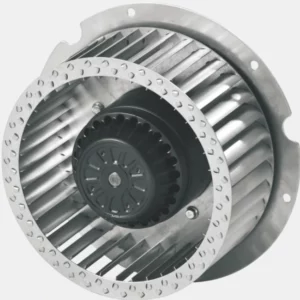
How do these machines contribute to increased efficiency and productivity in block manufacturing?
Automatic block making machines significantly contribute to increased efficiency and productivity in block manufacturing through several key aspects:
- High Production Capacity: These machines have high production capacities, capable of manufacturing a large volume of blocks in a shorter timeframe compared to manual or semi-automatic methods.
- Consistent Quality: Automation ensures consistent quality in block production. Uniformity in size, shape, and composition leads to better structural integrity and aesthetic appeal, minimizing rejections and improving efficiency.
- Reduced Labor Dependency: Automation reduces the need for manual labor in block manufacturing. Machines handle various tasks, minimizing human intervention in repetitive or physically demanding activities, leading to cost savings and improved safety.
- Customization and Flexibility: Many machines allow for customization in block sizes, shapes, or designs. This flexibility accommodates diverse architectural requirements, offering a range of design possibilities without compromising efficiency.
- Optimized Material Usage: Automated systems precisely measure and control raw material usage, minimizing waste and optimizing material consumption. This efficiency reduces costs and minimizes environmental impact.
- Streamlined Operations: These machines streamline the production process, offering a more organized and efficient workflow. This streamlining contributes to smoother project management and quicker construction progress.
- Quick Changeovers: Some machines enable rapid mold changes or adjustments, allowing for swift transitions between different block sizes, shapes, or designs. This flexibility minimizes downtime and enhances operational efficiency.
- Integrated Quality Control: Automation includes in-line quality control mechanisms that inspect produced blocks in real-time. Defective products can be identified and removed automatically, ensuring a higher percentage of usable output.
- Data Monitoring and Analysis: Automated systems collect and analyze production data in real-time. This information helps identify inefficiencies, allowing for continuous process improvement to enhance efficiency.
- Energy Efficiency: Modern automated machines are designed to operate efficiently, consuming minimal energy while maintaining high productivity. Energy-efficient systems contribute to reduced operational costs and environmental impact.
By integrating automation, precision, and efficiency into the block manufacturing process, these machines significantly enhance productivity, minimize waste, reduce operational costs, and contribute to the timely completion of construction projects.
How does automation play a role in the operation and efficiency of these machines?
Automation plays a fundamental role in the operation and efficiency of block making machines, influencing various aspects of their functionality:
- Consistency and Precision: Automation ensures consistent quality and precise measurements in block production. Automated systems control parameters such as material proportions, compaction, and shaping, resulting in uniformity across all produced blocks.
- Increased Speed and Productivity: Automation enables machines to operate continuously and efficiently, significantly increasing the rate of block production compared to manual methods. This automation boosts overall productivity.
- Reduced Labor Dependency: Automation minimizes the reliance on manual labor. Machines handle various tasks, reducing human intervention in repetitive or physically demanding activities, leading to cost savings and improved safety.
- Optimized Material Usage: Automated systems precisely measure and control raw material usage, minimizing waste and optimizing material consumption. china brick making machine This efficiency reduces costs and minimizes environmental impact.
- Integrated Quality Control: Automation includes in-line quality control mechanisms that inspect produced blocks in real-time. Defective products can be identified and removed automatically, ensuring a higher percentage of usable output.
- Data Monitoring and Analysis: Automated systems collect and analyze production data in real-time. This information helps identify inefficiencies, allowing for continuous process improvement and efficiency enhancement.
- Remote Monitoring and Control: Advanced automation allows for remote monitoring and control of machines. Operators can oversee operations from a distance, address issues promptly, and make real-time adjustments, minimizing downtime.
- Energy Efficiency: Modern automated machines are designed to operate efficiently, consuming minimal energy while maintaining high productivity. Energy-efficient systems contribute to reduced operational costs and environmental impact.
- Consistency in Maintenance: Automated systems may have built-in maintenance alerts or predictive maintenance features. These systems detect issues early, allowing for proactive maintenance scheduling, ensuring continuous machine operation.
Overall, automation streamlines processes, improves accuracy, enhances productivity, reduces labor costs, and contributes to higher-quality block production. It transforms the manufacturing process, making it more efficient, reliable, and adaptable to various production needs.
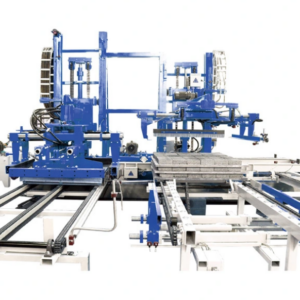
What is a centrifugal bathroom fan for ?
A centrifugal bathroom fan is a type of ventilation fan specifically designed for use in bathrooms. It is commonly installed in the ceiling or wall of the bathroom and serves the purpose of extracting stale air, moisture, and odors from the bathroom, thereby improving indoor air quality.
Here are some key features and functions of a centrifugal bathroom fan:
- Air Extraction: The primary function of a centrifugal bathroom fan is to extract and remove air from the bathroom. It uses centrifugal force generated by a fan wheel or impeller to draw air in and expel it through a duct system to the outside. This extraction process helps remove moisture, steam, and odors that can accumulate in the bathroom during activities like showering or bathing.
- Improved Indoor Air Quality: By removing moist air and odors, a centrifugal bathroom fan helps improve the overall indoor air quality in the bathroom. Excessive moisture in the bathroom can lead to the growth of mold, mildew, and bacteria, which can be detrimental to both the bathroom fixtures and the health of the occupants. The fan helps to combat these issues by quickly removing moisture and preventing excessive humidity levels.
- Condensation Prevention: Bathrooms are prone to condensation due to the presence of warm, moist air. This can lead to the formation of water droplets on walls, mirrors, and windows, potentially causing damage to surfaces and promoting the growth of mold and mildew. A centrifugal bathroom fan helps reduce condensation by expelling the moist air and replacing it with fresh air from outside the bathroom, thereby controlling humidity levels and preventing water accumulation.
- Odor Control: Unpleasant odors can accumulate in bathrooms, especially when using toilets or during certain activities. A centrifugal bathroom fan helps remove these odors by extracting the air and venting it outside, thereby improving the overall freshness of the bathroom environment.
- Noise Reduction: Centrifugal bathroom fans are generally designed to operate quietly, providing effective ventilation without causing excessive noise. This ensures a more peaceful and comfortable bathroom experience for the occupants.
- Energy Efficiency: Many centrifugal bathroom fans are designed to be energy-efficient, consuming relatively low amounts of electricity while providing adequate ventilation. Some models also come with features such as automatic shut-off timers or humidity sensors, which help optimize energy usage by operating the fan only when necessary.
- Additional Features: Some centrifugal bathroom fans may include additional features, such as built-in lighting, heaters, or humidity sensors. These features can enhance the functionality and convenience of the fan, providing added benefits for the bathroom environment.
Overall, a centrifugal bathroom fan plays a crucial role in maintaining a healthy and comfortable bathroom environment by effectively ventilating the space, removing moisture and odors, and preventing issues such as condensation and mold growth.
What benefits do centrifugal bathroom fans bring to the bathroom?
Centrifugal bathroom fans offer several benefits to the bathroom environment.
Here are some of the key benefits they bring:
- Moisture and Humidity Control: One of the primary benefits of a centrifugal bathroom fan is its ability to control moisture and humidity levels in the bathroom. When you shower or bathe, the warm water generates steam, which can lead to excessive moisture in the air. If left unchecked, this moisture can cause condensation on surfaces, promote the growth of mold and mildew, and potentially damage bathroom fixtures. A centrifugal bathroom fan extracts the moist air from the bathroom, reducing humidity levels and preventing these issues.
- Improved Indoor Air Quality: By removing moisture, odors, and stale air, centrifugal bathroom fans significantly improve indoor air quality in the bathroom. The fan helps eliminate unpleasant odors that can accumulate from various bathroom activities. It also removes volatile organic compounds (VOCs) that may be present in cleaning products or other materials used in the bathroom. This results in a fresher and healthier bathroom environment.
- Mold and Mildew Prevention: Excessive moisture in the bathroom can contribute to the growth of mold and mildew, which can be harmful to both the bathroom surfaces and the health of the occupants. Centrifugal bathroom fans help prevent mold and mildew growth by efficiently removing moisture and reducing humidity levels. This can reduce the need for extensive cleaning and maintenance while promoting a cleaner and healthier bathroom space.
- Odor Control: Bathrooms can develop unpleasant odors due to activities such as using the toilet or leaving wet towels or clothes inside. A centrifugal bathroom fan helps eliminate these odors by extracting the stale air and venting it outside. This not only improves the overall air quality in the bathroom but also enhances the comfort and freshness of the space.
- Increased Comfort: Excessive humidity and stagnant air in the bathroom can create an uncomfortable environment. A centrifugal bathroom fan helps create a more comfortable atmosphere by regulating humidity levels, reducing stuffiness, and promoting air circulation. This can make the bathroom a more pleasant place for everyday activities.
- Protection of Bathroom Fixtures: Continuous exposure to high humidity levels can damage bathroom fixtures such as walls, ceilings, mirrors, and cabinets. Over time, moisture can cause paint to peel, wallpaper to warp, and metal fixtures to corrode. By effectively removing excess moisture, a centrifugal bathroom fan helps protect these fixtures, extending their lifespan and reducing maintenance and repair costs.
- Energy Efficiency: Many centrifugal bathroom fans are designed to be energy-efficient. They consume relatively low amounts of electricity while providing effective ventilation. Some models may include features like automatic shut-off timers or humidity sensors, which optimize energy usage by operating the fan only when necessary. This can result in energy savings and lower utility bills.
Overall, centrifugal bathroom fans play a vital role in maintaining a comfortable, healthy, and functional bathroom environment. They help control moisture, prevent mold and mildew, eliminate odors, and improve indoor air quality, contributing to a more enjoyable and hygienic bathroom experience.
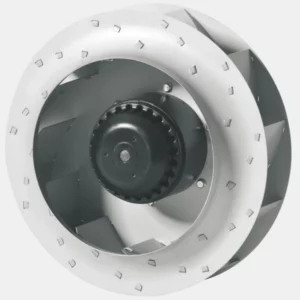
Exploring Ideal Plants for Hydroponic Greenhouse Systems
Hydroponic greenhouse systems have gained popularity as a sustainable and efficient method of plant cultivation. By providing plants with a nutrient-rich water solution and eliminating the need for soil, hydroponics allows for precise control over growing conditions. In this article, we will explore a range of plants that are particularly well-suited for hydroponic greenhouse systems, highlighting their adaptability, growth characteristics, and the advantages they offer for year-round production.
I. Leafy Greens and Herbs:
- Lettuce Varieties:
Hydroponic greenhouse systems are ideal for growing various lettuce varieties, such as butterhead, romaine, and leaf lettuce. These plants have shallow roots and fast growth rates, making them well-suited for hydroponic setups. Lettuces thrive in the controlled environment of a greenhouse, producing high-quality and consistent yields. - Spinach:
Spinach is another excellent choice for hydroponic cultivation. With its nutrient-rich and tender leaves, spinach can be grown year-round in a hydroponic greenhouse system. The controlled environment ensures ideal growing conditions, allowing for continuous harvests of this versatile and nutritious green. - Basil and Other Herbs:
Hydroponic greenhouse systems provide optimal conditions for growing herbs like basil, mint, parsley, and cilantro. These herbs exhibit rapid growth and intense flavors when cultivated hydroponically. The controlled environment allows for consistent production, ensuring a fresh supply of herbs throughout the year.
II. Vine Crops:
- Tomatoes:
Tomatoes are well-suited for hydroponic greenhouse systems, particularly determinate varieties that grow in a compact, bush-like shape. Hydroponic cultivation promotes vigorous growth, high yields, and improved fruit quality. With proper support structures, tomatoes can be easily managed within the controlled environment of a hydroponic system. - Cucumbers:
Cucumbers thrive in hydroponic greenhouse systems, benefiting from the consistent moisture and nutrient availability. The vertical growth habit of cucumbers makes them suitable for trellising, optimizing space utilization. Hydroponic cultivation ensures higher yields, straighter fruits, and reduced disease pressure.
III. Strawberries:
Hydroponic greenhouse systems provide an ideal environment for cultivating strawberries. The vertical cultivation method allows for efficient space utilization, and the controlled conditions ensure optimal fruit development. Hydroponic strawberry plants produce higher yields, larger fruits, and extend the harvesting season compared to traditional soil-based methods.
IV. Microgreens and Sprouts:
Hydroponic greenhouse systems are well-suited for growing microgreens and sprouts. These young and tender plants have short growth cycles and can be harvested within a few weeks. Hydroponics provides the necessary moisture and nutrients for rapid growth, resulting in highly nutritious and flavorful microgreens and sprouts.
V. Flowers and Ornamental Plants:
- Orchids:
Hydroponic greenhouse systems offer precise control over moisture, temperature, and nutrient levels, creating an ideal environment for growing delicate orchids. Hydroponic cultivation ensures optimal root aeration and prevents overwatering, promoting healthy orchid growth and vibrant blooms. - Cut Flowers:
Various cut flowers, such as roses, chrysanthemums, and gerbera daisies, can be cultivated successfully in hydroponic greenhouse systems. The controlled conditions allow for extended vase life, improved flower quality, and consistent production throughout the year.
Hydroponic greenhouse systems provide an efficient and sustainable method for cultivating a wide range of plants. From leafy greens and herbs to vine crops, strawberries, microgreens, and ornamental plants, hydroponics offers precise control over growing conditions and maximizes yields. By harnessing the benefits of hydroponic cultivation, farmers and enthusiasts can enjoy year-round production, higher crop quality, and the opportunity to grow a diverse array of plants in a controlled and sustainable manner.
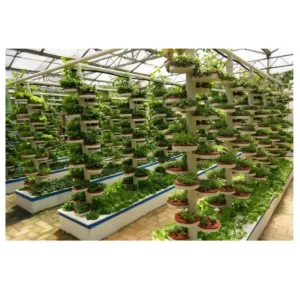
The Versatility and Benefits of Large Centrifugal Fans: Powerhouse Air Movement Solutions
Large centrifugal fans are powerful air movement devices that find extensive application across a wide range of industries. From HVAC systems in commercial buildings to industrial processes and power generation, these fans play a crucial role in maintaining proper ventilation, cooling, and air circulation. In this article, we will explore the various applications of large centrifugal fans and highlight the benefits they offer in terms of efficiency, reliability, and performance.
Diverse Applications of Large Centrifugal Fans
- HVAC Systems:Large centrifugal fans are commonly used in heating, ventilation, and air conditioning (HVAC) systems for commercial buildings, airports, stadiums, and other large structures. They help circulate air, maintain comfortable indoor temperatures, and ensure proper ventilation for improved air quality.
- Industrial Processes:Industries such as manufacturing, mining, chemical processing, and power generation rely on large centrifugal fans for various applications. These fans assist in cooling industrial equipment, removing exhaust gases, controlling dust and fume extraction, and providing ventilation in confined spaces.
- Power Generation:Large centrifugal fans are integral components in power plants and thermal management systems. They help cool generators, condensers, and transformers by ensuring efficient airflow and heat dissipation, contributing to the overall reliability and performance of power generation facilities.
- Process Cooling:In industrial facilities, large centrifugal fans are utilized for process cooling applications. They help maintain optimal operating temperatures for machinery, equipment, and production processes, ensuring efficient and uninterrupted operations.
- Ventilation and Exhaust Systems:Large centrifugal fans are employed in various environments that require effective ventilation and exhaust systems, such as tunnels, underground mines, warehouses, and manufacturing facilities. These fans help remove stale air, control humidity levels, and ensure a safe working environment.
Benefits of Large Centrifugal Fans
- High Airflow Capacity
Large centrifugal fans are specifically designed to deliver high airflow rates, making them suitable for applications that require substantial air movement. Their robust construction allows them to handle large volumes of air, providing efficient ventilation and cooling in demanding environments. - Pressure Generation
Centrifugal fans excel in generating and sustaining high static pressures, enabling them to overcome resistance in ductwork or system components. This makes them capable of delivering air to distant or hard-to-reach areas, ensuring proper airflow distribution throughout a facility. - Energy Efficiency
Advances in fan design and motor technology have led to the development of energy-efficient large centrifugal fans. These fans incorporate optimized impeller designs, aerodynamics, and energy-saving motors to reduce power consumption, resulting in energy savings and lower operating costs. - Durability and Reliability
Large centrifugal fans are typically constructed using robust materials, ensuring durability and longevity even in challenging operating conditions. Their design and engineering focus on reliability, minimizing downtime, and maintenance requirements, thus providing consistent performance and operational efficiency. - Noise Control
Many large centrifugal fans incorporate noise-reducing features, such as acoustic insulation and aerodynamic blade designs. These features help minimize noise levels, making them suitable for applications where noise control is crucial, such as commercial buildings, hospitals, and residential areas. - Customizability
Large centrifugal fans can be customized to meet specific requirements. They can be engineered to accommodate varying sizes, airflow rates, and pressure requirements, allowing for tailored solutions that match the unique needs of different industries and applications.
What are some c
Large centrifugal fans often incorporate various noise-reducing features to minimize noise levels and meet the requirements of noise-sensitive environments. Here are some common noise-reducing features found in large centrifugal fans:
- Acoustic Insulation
Centrifugal fans may have built-in acoustic insulation materials or linings within their housing or casing. These materials help absorb and dampen the sound generated by the fan, reducing noise propagation to the surrounding environment. - Aerodynamic Blade Design
The blade design of centrifugal fans plays a crucial role in noise reduction. Fans with specially engineered blade profiles, such as backward-curved or airfoil-shaped blades, help minimize turbulence and air disturbances, resulting in quieter operation. - Vibration Isolation
Large centrifugal fans can be equipped with vibration isolation mounts or dampers. These components absorb and minimize vibrations generated by the fan, reducing noise transmission to the surrounding structure or ductwork. - Sound-Absorbing Materials
Some centrifugal fans feature sound-absorbing materials applied to specific components, such as the impeller or inlet cone. These materials absorb sound waves and reduce noise levels by converting sound energy into heat energy. - Inlet and Outlet Silencers
In certain applications, inlet and outlet silencers can be added to the fan system. Inlet silencers reduce noise generated at the fan inlet by attenuating incoming sound waves, while outlet silencers minimize noise propagation through the ductwork or system discharge. - Enclosure Design
The overall design and construction of the fan enclosure or housing can contribute to noise reduction. Features like double-walled construction, solid panels, and sound-reflecting surfaces help contain and minimize noise emissions. - Speed Control
Noise levels can be reduced by optimizing the fan’s operating speed. By implementing speed control mechanisms, such as variable frequency drives (VFDs) or adjustable speed drives (ASDs), the fan speed can be adjusted to match the required airflow, resulting in quieter operation at reduced speeds. - Maintenance and Balancing
Proper maintenance and regular balancing of fan components are essential for noise reduction. Unbalanced impellers or worn-out bearings can lead to increased noise levels. Routine maintenance and balancing procedures help ensure smooth operation and minimize noise-inducing factors.
ommon noise-reducing features found in large centrifugal fans?
Large centrifugal fans are versatile and indispensable devices used across diverse industries for efficient air movement, ventilation, and cooling. Their ability to deliver high airflow capacity, generate significant pressure, and provide energy efficiency, durability, and reliability make them essential for maintaining optimal working environments in commercial, industrial, and power generation settings. By investing in large centrifugal fans, businesses can benefit from improved air quality, enhanced productivity, reduced energy costs, and increased operational efficiency.
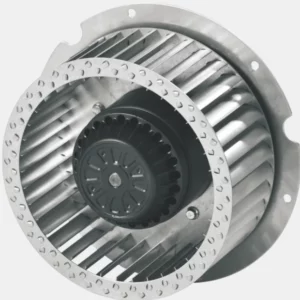
Where are Underground Solar Road Markers typically installed, and what specific road applications benefit from their use?
Underground Solar Road Markers are typically installed in various road and transportation applications where enhanced visibility, safety, and clear road markings are necessary, especially in locations where access to traditional grid-based lighting is limited or impractical.
Some specific road applications that benefit from the use of Underground Solar Road Markers include:
- Highways: Solar road markers can be installed along highways to improve lane visibility, delineation, and guidance. They help drivers maintain proper lane discipline and reduce the risk of lane departure accidents, especially at night and during adverse weather conditions.
- Urban Roads: Within cities and urban areas, these markers are used to enhance road safety, particularly at intersections, pedestrian crosswalks, and bus stops. They improve visibility for drivers, pedestrians, and cyclists.
- Rural Roads: Solar road markers are valuable on rural roads with limited lighting. They enhance road visibility and help drivers navigate safely through areas with less infrastructure.
- Roundabouts: Roundabouts benefit from these markers to clearly mark the circular path, lanes, and pedestrian crossings, ensuring smooth traffic flow and reducing the risk of accidents.
- Pedestrian Crosswalks: Solar road markers can be installed at crosswalks to improve pedestrian safety, making them more visible to drivers, especially during low-light conditions.
- Bike Lanes: Bicycle lanes can benefit from solar road markers to enhance cyclist safety by providing better visibility and delineation, reducing the risk of collisions with vehicles.
- Tunnels: Inside tunnels, where lighting may be limited, solar road markers provide continuous guidance and marking, improving driver safety and lane discipline.
- Airports: Airports use these markers for runway and taxiway lighting, enhancing aircraft navigation and ground operations.
- Parking Lots: Solar road markers are suitable for parking lots, guiding vehicles to parking spaces, and improving pedestrian safety within the lot.
- Private Roads and Driveways: Private properties and estates often use these markers for private roadways, driveways, and paths, providing safety and aesthetic benefits.
- Construction Zones: Temporary construction zones and detour routes can be marked with solar road markers to ensure safe and clear navigation for drivers.
- Public Transportation: Bus lanes, tramlines, Underground Solar Road Marker and transit stops can benefit from these markers to improve the visibility of public transportation lanes and stops.
The primary advantage of Underground Solar Road Markers is that they operate independently of the electrical grid, relying on solar power. This makes them ideal for remote locations or areas with limited access to electricity. They contribute to road safety by increasing visibility and improving lane discipline, reducing accidents, and enhancing transportation infrastructure overall. Their versatility allows for use in a wide range of road applications, making them a valuable addition to modern transportation systems.
What are the advantages of using solar-powered road markers compared to traditional reflective road markers or streetlights?
Solar-powered road markers offer several advantages over traditional reflective road markers and streetlights, making them an attractive choice for many road applications.
Here are some of the key advantages:
- Energy Efficiency: Solar road markers harness solar energy during the day and use it for illumination at night, which is highly energy-efficient. Traditional streetlights rely on grid electricity, which can be less efficient and environmentally friendly.
- Off-Grid Operation: Solar road markers can operate independently of the electrical grid, making them suitable for remote locations and areas with limited access to electricity. Traditional streetlights typically require a connection to the grid.
- Cost Savings: Solar road markers reduce electricity consumption and related costs. They have lower operating costs over their lifespan compared to traditional streetlights, which require ongoing energy and maintenance expenses.
- Reduced Environmental Impact: Solar-powered markers generate clean energy from the sun, contributing to a reduction in greenhouse gas emissions and reliance on fossil fuels. They have a smaller environmental footprint compared to grid-powered streetlights.
- Easy Installation: Solar road markers are relatively easy to install. They do not require extensive underground wiring, which can be time-consuming and disruptive in the case of traditional streetlights.
- Low Maintenance: Solar road markers typically have low maintenance requirements. They are designed to be durable, weather-resistant, and reliable, reducing the need for frequent servicing.
- Visibility and Safety: Solar road markers provide clear and consistent illumination, enhancing road visibility for drivers, pedestrians, and cyclists. They help improve road safety, especially in low-light or adverse weather conditions.
- Adaptability: Solar road markers can be installed in various road applications, such as highways, urban roads, pedestrian crosswalks, and more. They offer flexibility in marking and delineating different types of roads and paths.
- Self-Sufficiency: Solar markers include rechargeable batteries, allowing them to store excess energy during the day and operate during the night or in cloudy conditions. This self-sufficiency ensures continued functionality.
- Environmental Aesthetics: Solar road markers are often designed to blend into the road surface, reducing visual clutter and improving the aesthetics of roadways.
- Quick Deployment: Solar road markers can be deployed relatively quickly, making them suitable for temporary road construction or event-related road marking.
- Safety in Power Outages: In regions prone to power outages, solar road markers can continue to function, providing safety and guidance when grid-powered streetlights may be unavailable.
While solar-powered road markers offer numerous advantages, it’s essential to consider factors such as local climate, installation requirements, and the specific application when deciding whether they are the most suitable choice for a particular road project.
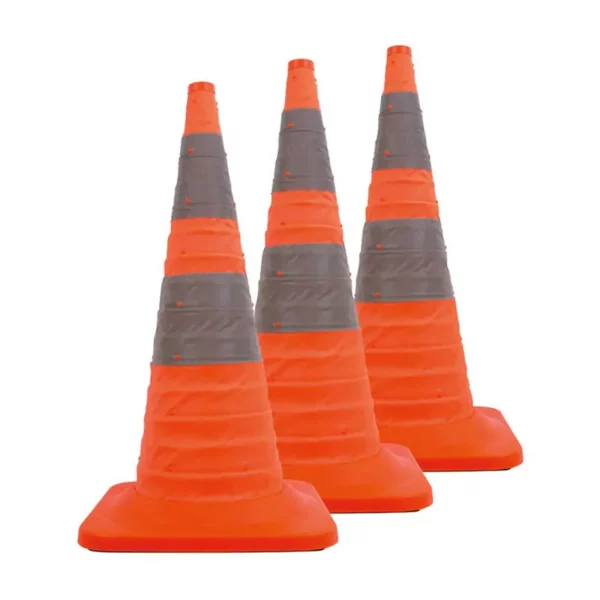
How long can Underground Solar Road Markers operate without direct sunlight, such as during nighttime or inclement weather?
The operational duration of Underground Solar Road Markers without direct sunlight, such as during nighttime or inclement weather, can vary based on several factors, including the specific design of the markers, the capacity of their energy storage, and the prevailing environmental conditions.
Here are some general considerations:
- Battery Capacity: Underground Solar Road Markers are equipped with rechargeable batteries that store the energy generated from solar panels during the day. The capacity of these batteries plays a crucial role in determining how long the markers can operate without direct sunlight. Larger capacity batteries can provide extended operation during periods of darkness or low light.
- Energy Efficiency: The energy efficiency of the marker’s lighting system is essential. Some markers are designed to provide a balance between brightness and energy conservation, allowing them to last longer on a single charge.
- Usage Patterns: The operational duration can also depend on how frequently the marker’s lights are activated. For example, markers on high-traffic roads that are constantly illuminated may drain their batteries faster than markers on low-traffic roads.
- Environmental Conditions: Inclement weather, such as heavy cloud cover or snow, can reduce the amount of available sunlight for charging the markers. Additionally, extreme cold temperatures can affect battery performance. Some markers are designed to be more resilient in adverse weather conditions.
- Light Level and Sensing: Many solar road markers include light-sensing technology that automatically activates the lights when ambient light levels drop. This helps conserve energy during daylight hours and ensures the markers are operational when needed.
- Battery Management: Proper battery management systems can help extend the lifespan of the batteries and optimize energy usage.
- Backup Lighting: In some cases, solar road markers may have backup power sources, such as capacitors or supercapacitors, to provide short-term illumination in the absence of sunlight.
The specific operational duration of Underground Solar Road Markers without direct sunlight will vary among different models and manufacturers. Some markers may be designed to last throughout the night, while others may have shorter durations. It’s essential to consider the markers’ intended application, the local climate, and the markers’ technical specifications when determining their suitability for a particular location or purpose. Underground Solar Road Marker Regular maintenance and battery replacement may also be necessary to ensure consistent performance over time.
What maintenance and durability considerations should be taken into account for solar-powered road markers?
Maintenance and durability considerations for solar-powered road markers are essential to ensure their long-term functionality and road safety.
Here are some key factors to keep in mind:
- Routine Inspection: Regularly inspect the solar-powered road markers to check for physical damage, wear and tear, and any signs of malfunction. Inspections should include the marker’s housing, solar panel, LED lights, and battery compartment.
- Cleaning: Keep the solar panels clean and free of debris, dirt, or snow, as these can reduce solar energy absorption and hinder recharging. Regular cleaning is particularly important in regions with varying weather conditions.
- Battery Maintenance: Monitor the state of the batteries to ensure they are in good working order. Batteries may need periodic replacement as they have a limited lifespan.
- Sealing and Waterproofing: Solar road markers are typically exposed to various weather conditions, so it’s crucial to ensure that their housing and seals are intact to prevent water ingress, which can damage internal components.
- Vandalism and Theft Prevention: In some areas, solar road markers may be subject to vandalism or theft. Consider security measures or tamper-resistant designs to protect the markers.
- Durability of Materials: The construction and materials used in the markers should be durable and resistant to environmental stressors, such as UV radiation, extreme temperatures, and impacts from vehicles.
- Impact Resistance: Road markers may be subjected to the weight of vehicles passing over them. Ensure that they are designed to withstand this stress and that they are securely installed to prevent dislodgement.
- Energy Efficiency: Optimize the energy efficiency of the markers to ensure they can operate effectively, even during periods of limited sunlight. This includes efficient LED lighting and power management systems.
- Backup Power: Some markers have backup power sources, such as capacitors, to maintain their operation during low-sunlight or overcast conditions. Ensure these systems are functional.
- Compliance with Standards: Ensure that the solar road markers meet relevant safety and performance standards in your region. Compliance with standards is essential for road safety and legal requirements.
- Replacement Parts: Maintain a supply of replacement parts, such as LEDs and batteries, to facilitate timely repairs and replacements.
- Training: Provide training for maintenance personnel on proper inspection, cleaning, and maintenance procedures to extend the markers’ lifespan.
- Warranty and Support: Choose reputable manufacturers or suppliers who offer warranties and support services to address issues that may arise.
- Environmental Impact: Consider the environmental impact of the markers and their components, such as battery disposal. Proper disposal or recycling of old components is important for sustainability.
By addressing these maintenance and durability considerations, you can help ensure that solar-powered road markers continue to function effectively and contribute to road safety over their operational lifespan. Regular maintenance and proactive care are essential to maximize their benefits and longevity.
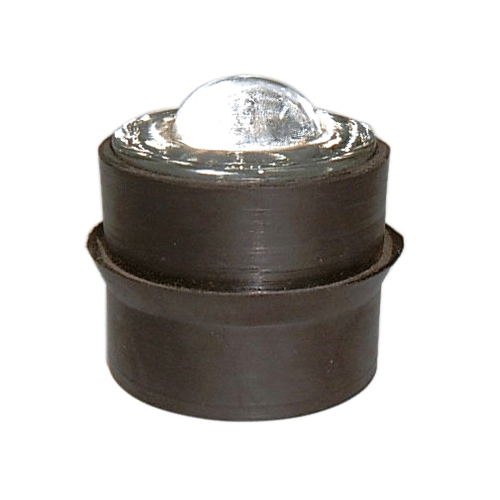
The Advantages of Direct Supply from AC Axial Fan Manufacturers
Introduction
AC axial fans play a crucial role in various industries, providing efficient cooling and ventilation solutions. When sourcing AC axial fans for your business, exploring the option of direct supply from manufacturers can offer numerous advantages. This article highlights the benefits of establishing a direct supply relationship with AC axial fan manufacturers and how it can streamline your procurement process while ensuring quality and reliability.
Cost Savings
One of the primary advantages of direct supply from AC axial fan manufacturers is the potential for cost savings. When working directly with manufacturers, you eliminate intermediary costs associated with distributors or wholesalers. By bypassing these additional layers, you can negotiate favorable pricing and achieve better value for your investment. Direct supply can lead to significant cost savings, particularly for bulk orders or long-term procurement contracts.
Customization and Tailored Solutions
Directly engaging with AC axial fan manufacturers allows for customization and tailored solutions to meet your specific requirements. Manufacturers have the expertise and capabilities to design and produce fans that align precisely with your application needs. Whether you require specific fan sizes, airflow capacities, voltage specifications, or unique mounting configurations, direct supply enables you to collaborate closely with the manufacturer to develop customized solutions that optimize performance and efficiency.
Quality Assurance
When sourcing AC axial fans directly from manufacturers, you gain greater control over the quality assurance process. Direct supply allows you to establish clear quality standards, specifications, and inspection protocols with the manufacturer. This ensures that the fans meet your desired quality benchmarks, conform to industry standards, and adhere to any regulatory requirements. Manufacturers are also more invested in maintaining their reputation and delivering high-quality products, as their direct relationship with customers is at stake.
Technical Expertise and Support
AC axial fan manufacturers possess in-depth technical knowledge and understanding of their products. When working with them directly, you gain access to their expertise and support throughout the procurement process. They can provide valuable insights regarding fan selection, installation, maintenance, and troubleshooting. Manufacturers can also offer guidance on optimizing fan performance, efficiency, and noise reduction based on their comprehensive understanding of the product and its application.
Timely Delivery and Supply Chain Efficiency
Direct supply from AC axial fan manufacturers often results in improved supply chain efficiency and timely delivery. By eliminating intermediaries, you can streamline the ordering and fulfillment process. Manufacturers have better control over production schedules, inventory management, and shipping logistics. This reduces lead times and ensures that your fan orders are delivered promptly, minimizing disruptions to your operations and project timelines.
Long-Term Partnership
Establishing a direct supply relationship with AC axial fan manufacturers fosters a long-term partnership. Manufacturers value customer relationships and are more likely to provide ongoing support, maintenance services, and spare parts availability. They may offer extended warranties, ac axial fan factory direct supply after-sales assistance, and even product upgrades or replacements as technology evolves. Building a strong partnership with the manufacturer creates a mutually beneficial relationship, ensuring reliable supply and support for your fan requirements in the long run.
Conclusion
Direct supply from AC axial fan manufacturers offers numerous advantages, including cost savings, customization options, quality assurance, technical expertise, timely delivery, and long-term partnership benefits. By working directly with manufacturers, you gain greater control over the procurement process, product quality, and technical support. It enables you to tailor solutions to your specific needs, ensuring optimal performance and efficiency. Direct supply establishes a direct line of communication with the manufacturer, fostering a collaborative and mutually beneficial relationship. Consider exploring direct supply options when sourcing AC axial fans to maximize the benefits and enhance your overall procurement experience.
